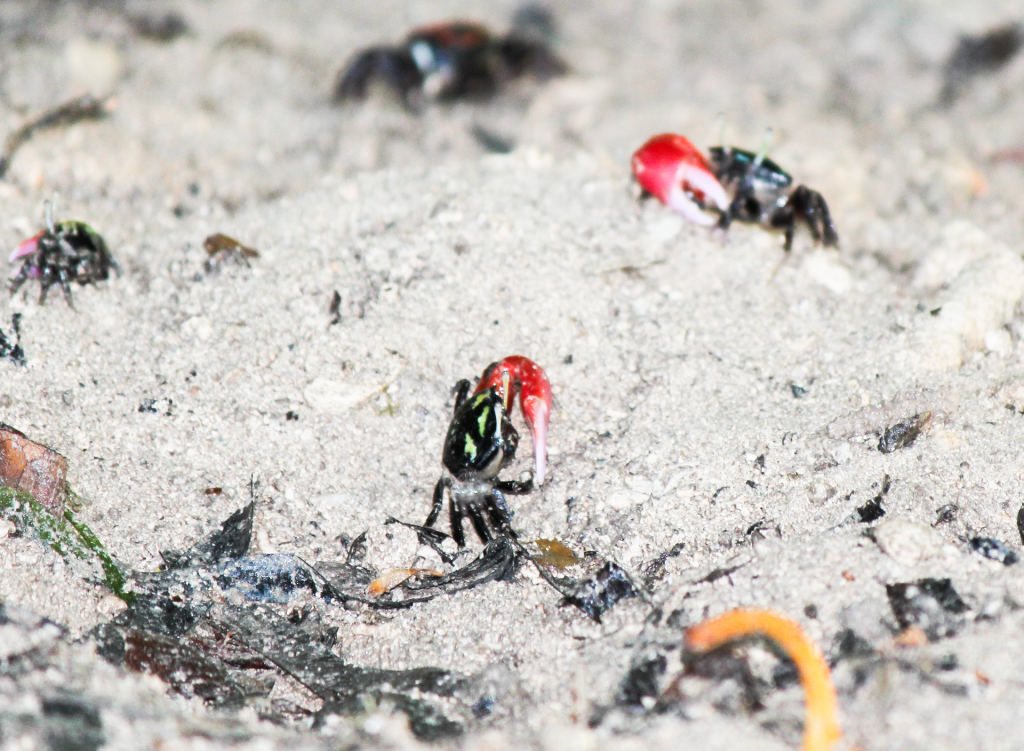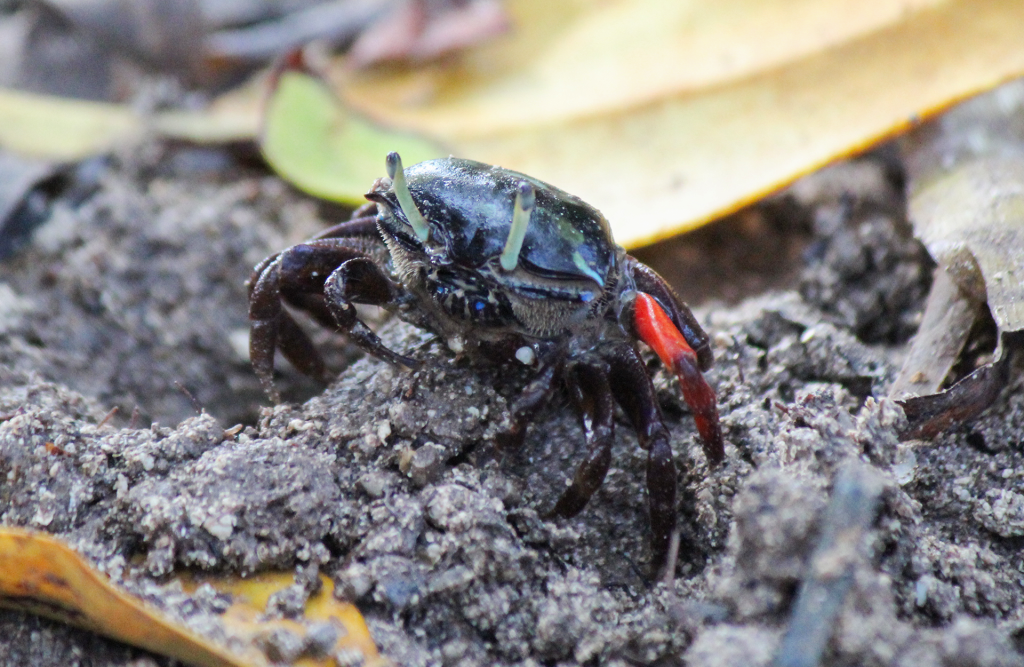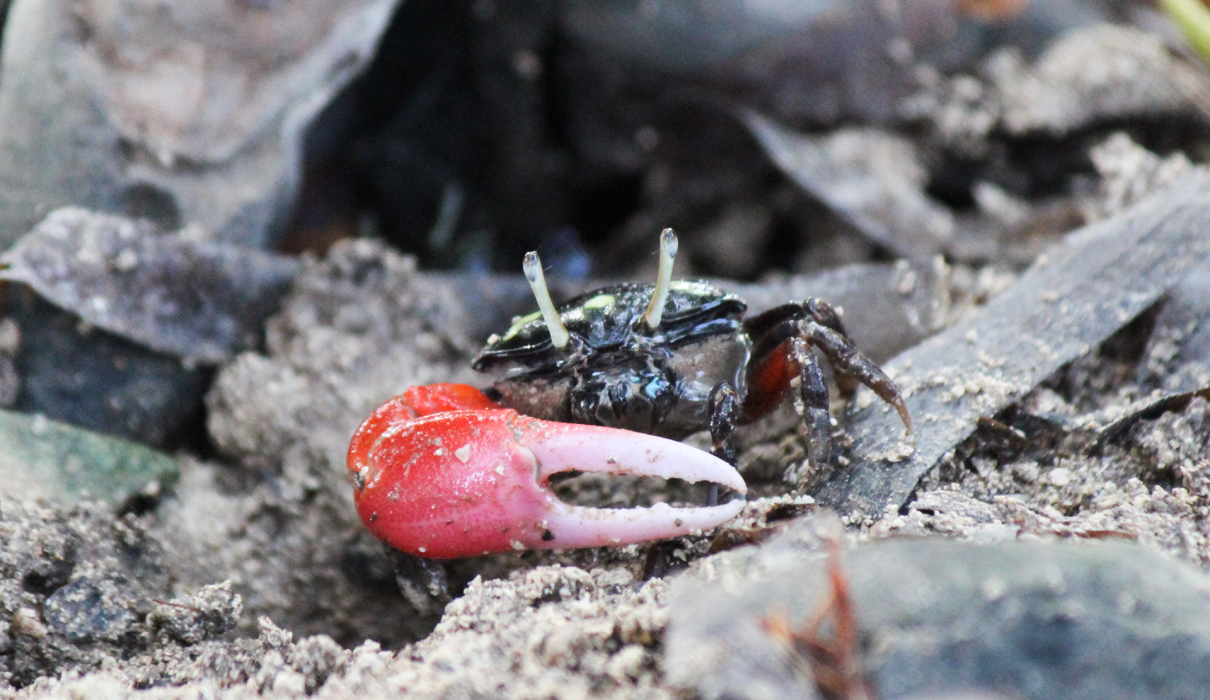In the mangrove areas of the Maldives, one can often spot the captivating Paraleptuca crassipes, also known as the thick-legged fiddler crab. These crabs, once belonging to the Uca genus, were reclassified in 2016 into the Paraleptuca genus. They are commonly sighted in locations like Laamu Hithadhoo and Kaafu Huraa, with reports suggesting their presence in Noonu Maalhendhoo as well.


What Makes a Fiddler Crab?
Fiddler crabs are a diverse group, with over a hundred species found in coastal regions worldwide. They belong to the Ocypodidae family, recognized for their distinctively different-sized claws. Males possess a larger major claw compared to the minor one, while females have claws of equal size. These crabs are typically small, with the largest reaching just over two inches across. They inhabit various coastal habitats, including sea beaches, brackish mud flats, lagoons, and swamps.
The Story Behind the Name
The common name “fiddler crab” originates from the peculiar movement of the crab’s smaller claw during feeding, resembling a fiddle being played.
Life and Behavior
Fiddler crabs undergo molting as they grow, shedding their shells to reveal new ones. Males regrow their large fiddle claw if lost, usually after their next molt. These crabs exhibit a fascinating circadian rhythm, mirroring the tides’ ebb and flow by turning dark during the day and light at night.
Fiddler crabs have relatively short lifespans, with males using their major claw to perform a waving display during courtship. Females select mates based on the size of their claws and the quality of their display. After mating, females carry their eggs beneath their bodies until they are ready to release them into the receding tide. Larvae remain planktonic for about two weeks before settling.
Evolutionary Curiosities
The major claw of fiddler crabs poses an evolutionary puzzle. While it’s used for both fighting and courtship displays, the mechanics best suited for each function don’t align. Some species, like Austruca mjoebergi, have been observed bluffing about their fighting ability by regrowing weaker but intimidating claws.
In summary, the thick-legged fiddler crab is a captivating creature with a rich evolutionary history, offering a glimpse into the complex and diverse world of coastal ecosystems.
Scientific Classification
- Domain: Eukaryota
- Kingdom: Animalia
- Phylum: Arthropoda
- Class: Malacostraca
- Order: Decapoda
- Suborder: Pleocyemata
- Infraorder: Brachyura
- Superfamily: Ocypodoidea
- Family: Ocypodidae
More than a hundred species of fiddler crabs are distributed across 11 genera within the Ocypodidae family, reflecting their diverse and widespread presence in coastal environments.
Reference: wikipedia


